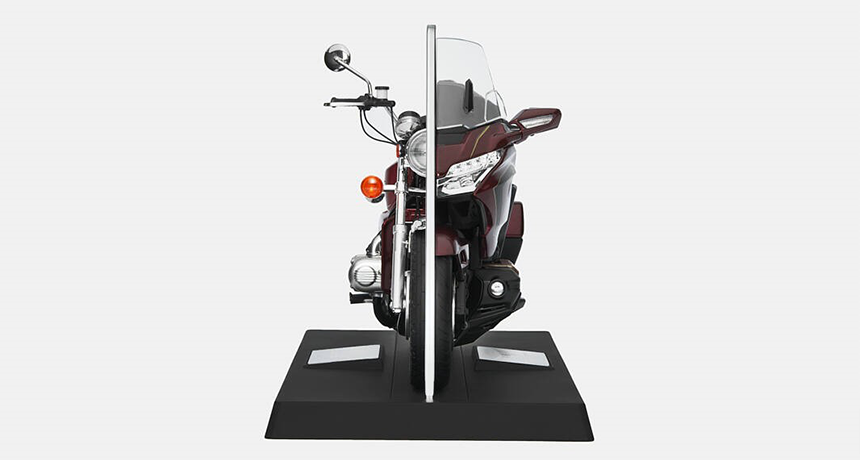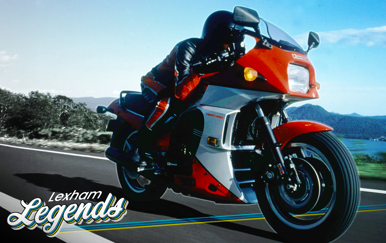This year, 2025, marks the 50th anniversary of not only one of biking’s longest-lived models, but also one of its greatest names and a machine which changed the whole landscape of motorcycling – the Honda Gold Wing.
Launched as the GL1000 in 1975, the Gold Wing set out to not only be Honda’s new flagship machine but also one which pioneered a whole raft of new technologies. It was not only the first production ‘1000’ but also Honda’s first water-cooled motorcycle. It was also the first Honda to be equipped with twin front disc brakes.
And yet, initially at least, the Gold Wing did not set out to be the luxury, class-defining, ‘full-dress’ tourer it is today. It also initially gained only a lukewarm public response, was infamously denigrated as a ‘two-wheeled car’ and only slowly evolved into the global success story it ultimately became…
Honda Gold Wing Engine | 1975 vs. Now

The Gold Wing’s origins date back to 1972, four years after Honda’s unveiling of the first superbike, the CB750. That machine, although a global ‘game-changer’, had quickly been followed by Suzuki’s GT750, Kawasaki’s 750 H2 and the same firm’s CB750-beating Z1 900. So, with Honda usurped as superbike kings, boss Soichiro Honda became determined to regain his ‘crown’, set up a design team led by Shoichiro Irimajiri (who headed Honda’s five and six-cylinder road racing engines in the 1960s, subsequent F1 project and would also later be behind the CBX1000 and NR500) and tasked him to explore ‘the king of motorcycles’.
With the benefit of hindsight, Irimajiri’s brief was a little confused. Although aiming to create a new superbike king, Honda was also mindful of the continuing popularity in the US of traditional tourers such as Harley’s ElectraGlide and BMW’s boxer twins. To be the best, the new machine – codenamed M1 – would not only have to be fast and bigger than 900cc, it would also have to be the best touring machine ever produced. As Honda himself later said: “The M1 was built to find out what was possible.”
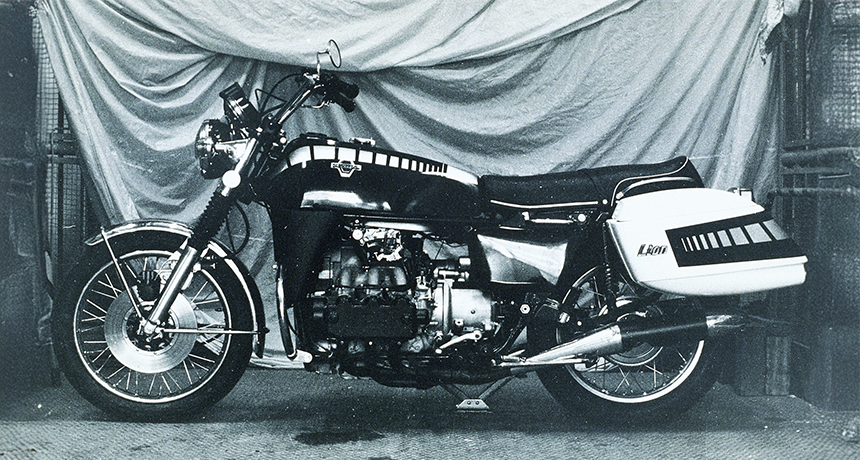
The resulting M1 prototype did exactly that. As a liquid-cooled flat six displacing 1470cc it was bigger than any then production motorcycle. It also boasted shaft drive, a CB750-beating 80bhp, claimed top speed of 130mph and massive all-up weight of 265kg. On the downside, the length of the six-cylinder engine made a comfortable riding position impossible, Honda himself baulked at its massive size and the M1 was canned.
But the M1 had served its purpose in directing development and the overall ‘king of kings’ project lived on. With the emphasis now on creating a world beating tourer, Toshio Nozue, took over from Irimajiri as project leader, the 1470cc flat six was shorn of two cylinders and trimmed to become a 999cc flat four, and a new name – Gold Wing – after the Honda company logo, was adopted to emphasise its significance.
The result, the first GL1000K0 Gold Wing, was unveiled at Honda’s US dealer show is Las Vegas in September 1974, publicly launched in Cologne the following month and went on sale in 1975.
Public opinion, however, was initially mixed. Some thought its massive weight excessive; one magazine infamously derided it as a ‘a two wheeled car’, while its hefty price deterred buyers, too, so much so that, in its first year, instead of targeted sales of 60,000, just 5000 were sold.
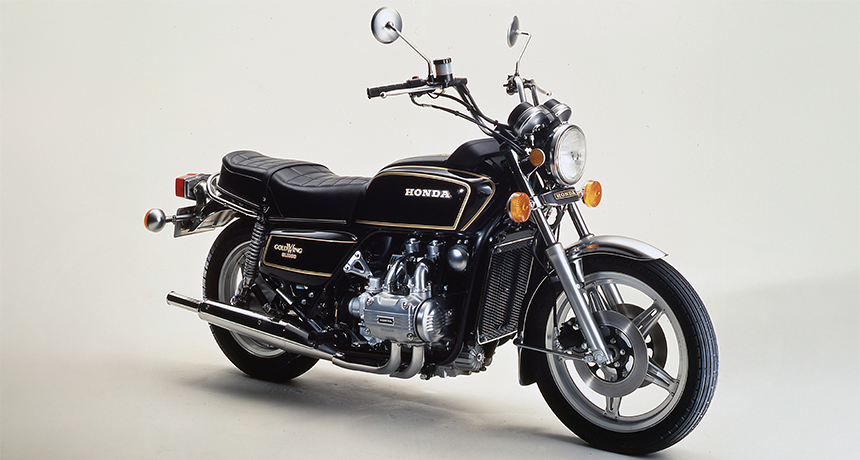
1976 Honda Gold Wing | The Most Luxurious Tourer EVER
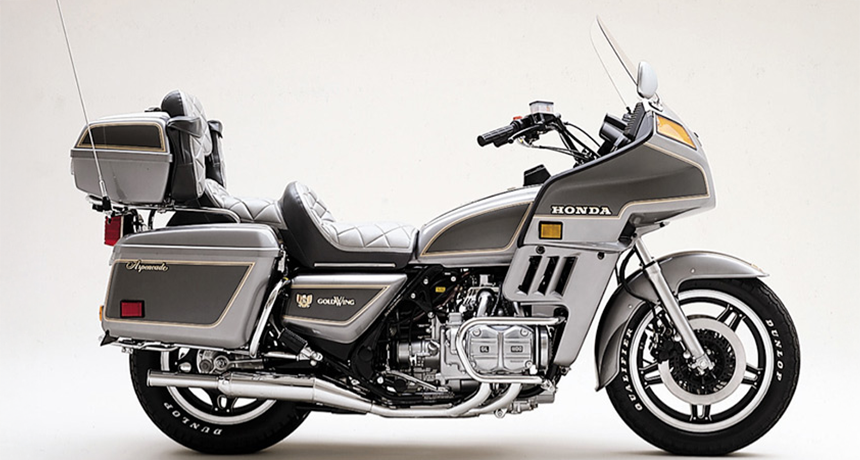
From there, however, things improved. In 1976 a new advertising campaign focussed on the ‘Wing’s core merits as a fast grand tourer and over 20,000 were sold. The increasing availability of aftermarket fairings from the likes of Vetter and Rickman improved its touring credentials while the evolution of the ‘Wing itself saw it gradually establish itself as motorcycling’s most luxurious tourer.
In 1976 a ‘Ltd’ version was added with more traditional ‘cruiser’ styling details and in 1978 it gained new ComStar wheels, updated styling and improved suspension.
1980 Honda Gold Wing GL1100 | Upgraded Capacity
But the biggest change came in 1980 when, first, the Gold Wing’s capacity grew to become the GL1100.
Then, and even more importantly, an additional model, the GL1100 Interstate, was announced, this time with full fairing and hard luggage. It was the first mass-produced Japanese motorcycle with full touring kit, a huge sales success and the Wing’s status as ‘king of tourers’ was set in motion.

The Interstate proved so successful it led to a third Gold Wing model in 1982, the Aspencade, which was even more luxurious and came with an AM/FM stereo, two-tone paint and uprated brakes.
But more was still to come.
1984 Honda Goldwing GL1200 | The Yamaha Venture 1200 BIGGEST Competitor
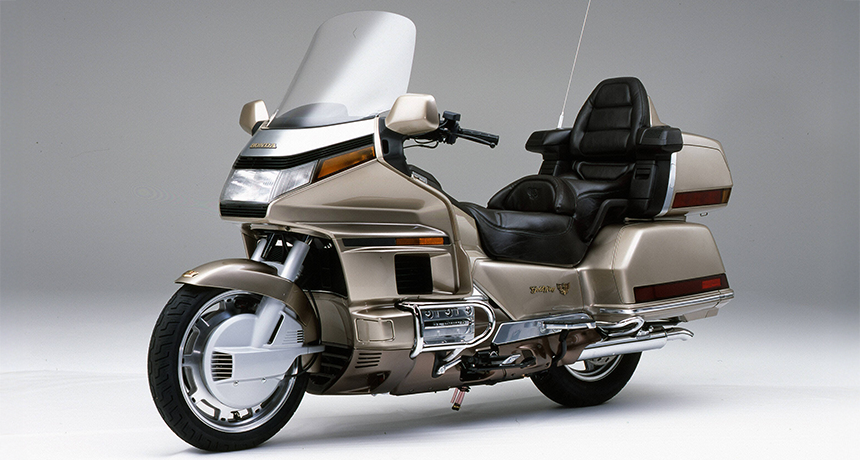
In 1984, in response to a growing number of rivals such as Yamaha’s Venture 1200, the Gold Wing grew again to become the GL1200 while, at the same time, aware that ever bigger competitors were likely, Honda began work on an all-new, even larger successor that would cement the Wing as ‘ultimate tourer’ once and for all.
1988 Honda GL1500 Goldwing | ALL NEW Engine, Bodywork & More
The result, the 1988 GL1500, was exactly that. With not only a new 1520cc flat six but also a new chassis, sleek, fully integrated bodywork and a degree of luxury and comfort far in excess of its rivals, the new Gold Wing not only saw off all rivals but survived in production for a full 13 years becoming the definitive ‘full dresser’ for a generation and spawning its own owners’ clubs and a devoted following.
Yet even that, most famous, incarnation of the Gold Wing, couldn’t last forever and, in 2001, the GL1500 was replaced by another all-new ‘Wing, the again larger – but crucially also lighter thanks to a new aluminium frame – GL1800.
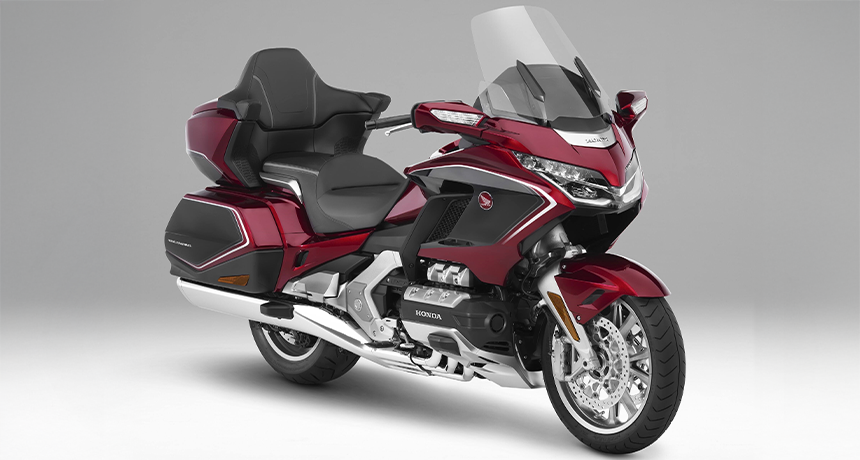
2018-2025 | The New Gold Wing Era
While in 2018, following the arrival of a new generation of ultra-sophisticated and more potent ‘full-dressers’ headed by BMW’s six-cylinder 2010 K1600GTL, the latest (and still current) all-new Gold Wing was launched, this time with more power, better handling, the option of Honda’s clever semi-automatic DCT transmission, and, crucially, a full suite of the latest electronics.
That Gold Wing lives on to this day and shows no signs of being either superceded or beaten. But then, as Honda’s flagship for 50 years and with over 650,000 of all types now sold, that has always been the Gold Wing’s way…
